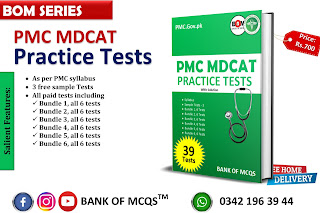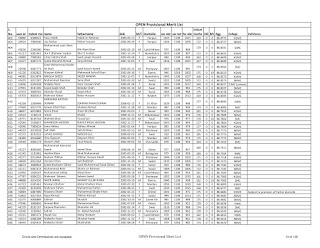Chap.15 Homeostasis MCQs with solution
|
1. |
Chap No. 15 homeostasis |
|
|
2. |
The
enlarged end of the ureter within the kidney is: (a)
Nephron (b) Urinary
Bladder (c)Pelvis
(d) Hilus |
C |
|
3. |
In
nephron glomerulus is present in the: (a)
Bowman's Capsule (b) First
coiled part (c)
Second coiled part (d) Loop of Henle |
A |
|
4. |
Which
one of the following controls salt levels in the human body: a)
Lungs (b) Kidney (c)
Heart (d) All of
these |
B |
|
5. |
The
removal of nitrogenous waste and any other substance which are not needed in
the cell activities is: (a)
Excretion (b) Homeostasis (c)
Respiration (d)
Co-ordination |
A |
|
6. |
A mammal excretes nitrogen in the form of: (a)
Ammonium lons (b) Amino Acids (c)
Urea (d) Uric Acid |
C |
|
7. |
In
humans, which kidney lies a little lower than other: (a)
Right (b) Left (c)
Both are present at same level (d)
None of these |
A |
|
8. |
The
unit of structure and function in human kidney is: (a)
Nephron (b) Neuron (c)
Alveoli (d) All of these |
A |
|
9. |
About
how many nephrons are there in each kidney of human: (a)
16 (b) 200 (c)
1000 (d) 1000000 |
D |
|
10. |
The
force that moves fluid from the blood through the walls of a capillary and
bowman's capsule of a nephron is: (a)
The beating of cilia (b) Blood
pressure (C)
Peristalsis of capsule (d)
Gravity |
B |
|
11. |
Which
of the following components of th blood does not enter the nephron: (a)
lons (b)
Glucose (c)
Plasma Proteins (d) Urea |
C |
|
12. |
Which
of the following parts of the nephron is least permeable to water: (a)
Proximal tubules (b)
Descending limb of the Loop of Henle (C)
Ascending limb of the Loop of Henle (d)
Collecting duct |
C |
|
13. |
The
functioning of kidney to form urine is the result which of the following
process: (a)
Pressure filtration through the glomerulus (b)
Reabsorption of the filtrate as it passes through the glomerulus (c)
Tubular secretion (d)
All of these |
D |
|
14. |
In man urea is formed principals in: (a)
Gall Bladder (b)
Liver (c)
Pancreas (d)
Kidneys |
B |
|
15. |
The complex cyclic sequence of enzymatic reaction
as a result of which urea is formed is (a)
Urea Cycle (b)
Ornithine Cycle (0)
Urine Cycle (d)
Botha and b |
D |
|
16. |
The
pH of urine vary from: (a)
4 to 5 (b) i to 4 c)
11 (d) 4.6 to
8 |
D |
|
17. |
The
enlarged end of the ureter within the kidney is: (a)
Nephron (b) Urinary
Bladder (c)
Pelvis (d) Hilus |
C |
|
18. |
In
a nephron glomerulus is present in the (a)
Bowman's Capsule (b) First
coiled part (c)
Second coiled part (d) Loop of Henle |
A |
|
19. |
Which
one of the following controls salt levels in the human body: (a)
Nephridia (b) Malpighian
Tubules (c)
Kidney (d) Alveol |
C |
|
20. |
Various
nitrogenous excretory substance formed during chemical changes in the cells are: (a)
Ammonia (b) Urea (c)
Uric Acid (d) All of
these |
D |
|
21. |
The pH of urine vary form: (a)
4.00 to 8.00 (b)
4.1 to 8,00 (c)
4610800 (d) 4.8 to 8.00 |
C |
|
22. |
The
nitrogenous wastes in man are removed by: (a)
Lungs (b) Kidney (c)
Blood (d) Both a and
b |
D |
|
23. |
The
enlarged anterior end of the ureter in human kidney is called: (a)
Pelvis (b) Hilus (c)
Bean (d) All of
these |
A |
|
24. |
Which
of the following is correct about the kidney? (a)
Filteration Occurs in the Bowman's Capsule and is non-Selective (b)
Filteration is selective and occurs by active Transport (c) Reabsorption is selective and occurs
by passive transport only (d)
Reabsorption occurs in the glomerulus |
c |
|
25. |
In human, urea is: (a)
Produced in the kidney and excreted by the skin (b)
Produced in the liver and excreted mainly by the kidneys (c)
Produced in the lungs as a by-product of exhaling (d)
Accumulates in our Bodies as We Age |
B |
|
26. |
ADH
most directly affects: (a)
Glomerulus (b) Bowman's
capsule (c)
Lacteal (d)
Collecting tubule of the nephron |
D |
|
27. |
Which
of the following animals is an
osmoconformer? (a)
Shark (b) Skate (e)
Hag Fish (d) All of
these |
D |
|
28. |
Fresh
water animals actively transport salts from the external dilute medium with
the help of special salt cells called: (a)
Choanocytes (b) lonocytes (c)
Melanocytes (d) Solenocytes |
B |
|
29. |
One
of the following is concerned with the secretion of salts: (a)
Brunner's Glands (b) Sebaceous
Glands (c)
Rectal Glands (d) Preen Gland |
C |
|
30. |
Land
snail is: (a)
Ammonotelic (b) Ureotelic (c)
Uricotelic (d) None of
these |
|
|
31. |
The
rate of blood flows through both kidneys per minute is approximately: (a)
5 L (b) 8 L (c)
1.2 L (d) 3 L |
C |
|
32. |
The
kidney is surrounded by tough membrane tissue known as: (a)
Pericardium (b)
Renal Peritoneum (c)
Periosteum (d) Sarcolemma |
B |
|
33. |
The
act of emptying the bladder is called: (a)
Circulation (b) Filtration (c)
Secretion (d) Micturition |
D |
|
34. |
The capillaries surrounding the loop of the Henle
are called: (a)
Peritubular capillary network (b)
Vasa Recta (c)
Glomerulus (d)
All of these |
B |
|
35. |
The
cells of Bowman's capsule in the kidneys glomerulus are called: (a)
Lonocytes (b) Podocytes (c)
Choanocytes (d) Yellow cells |
b |
|
36. |
How
much glomerular filtrate is produced ultrafiltration per minute? (a)
12 ml (b) 25 ml (c)
125 ml (d) 251 ml |
C |
|
37. |
Which
part of the loop of Henle is impermeable to water? (a)
Ascending Limb (b)
Descending Limb (c)
Both Limbs (d)
Henle's Loop has no relation with water |
A |
|
38. |
The
distal convoluted tubule perform the functions like: (a)
Osmoregulation (b) Maintaining
blood pH (c)
Sodium (d) All of
these |
D |
|
39. |
Tubular
secretion is caused mainly by: (a)
Diffusion (b) Active
transport (c)
Carrier molecules (d) All of these |
B |
|
40. |
Cystitis
is the infection of: (a)
Kidney (b) Urethra (c)
Bladder (d) Nephron |
C |
|
41. |
Fungal
organism causing urinary tract infection is: (a)
Escherichia Coli (b) Klebsiella (c)
Staphylococcus (d) Candida Albicans |
D |
|
42. |
High
calcium level in the blood is known as: (a)
Hypercalcemia (b) Hypercalciuria (c)
Hypocalcemia (d) Hyperuricemia |
A |
|
43. |
Normal range of uric acid in the blood of
men: (a)
1 mg/dL (b) 3.4-7 mg/dL (C)
10 mg/L (d) 20 mg/dL |
B |
|
44. |
Percutaneous Nephrolithotomy (PCNL) technique
is used to remove: (a) Small kidney stones (b) Large kidney stones (c)
Urea (d) None of
these |
B |
|
45. |
Presence
of blood in the urine is called (a)
Glycosuria (b) Anuria (c)
Haematuria (d)
Pyelonephritis |
C |
|
46. |
A
metabolic disorder in which an excess of uric acid accumulates in the body
and is deposited in the joints is known as: (a)
Pyrexia (b)
Hyperoxaluria (c)
Gout (d) Diabetes
Insipidus |
c |
|
47. |
The
protection of an internal environment frobm the harms of fluctuations is the
definition of which of the following? (a)
Osmoregulation (b) Excretion (c)
Thermoregulation (d) Homeostasis |
D |
|
48. |
The
environment where the animals produce large volume of diluted urine is: (a)
Hypotonic Aquatic (b) Isotonic Aquatic (c)
Hypertonic Aquatic (d)
Terrestrial |
C |
|
49. |
The
excretory product that requires minimum water for its elimination compare to
others: (a)
Urea (b) Uric Acid (e)
Creatinine (d) Ammonia |
B |
|
50. |
The
excretory structures that deliver urine from kidneys to urinary bladder are: (a)
Urethra (b) Ureter (c)
Pelvis (d)
Collecting Tubule |
B |
|
51. |
The
metabolic wastes that are ingested into the body and must be removed include: (a)
Pesticides (b) Drugs (c)
Food additives (d) All of these |
D |
|
52. |
Which
of the following is not endotherm? (a)
Bird (b)
Amphibian (c)
Flying Insects (d) Mammals |
B |
|
53. |
Name
the type of adaptations from the following that is responsible for shivering thermogenesis: (a)
Structural (b)
Physiological (c)
Behavioral (d) All of these |
B |
|
54. |
The
primary advantage of peritoneal dialysis is: (a)
More effectiveness than Haemodialysis (b)
Can be used without dialysate (c)
Can be used without any catheter (d)
Mobility |
D |
|
55. |
First
successful kidney transplantation took
place in: (a)
1930 (b) 1954 (c)
1980 (d) 1994 |
B |
|
56. |
How
many Human Leukocyte Antigens (HLAS) a person has? (a)
Two (b)
Three (c)
Four (d)
Six |
D |
|
57. |
Non-shivering
thermogenesis is the heat production caused by: (a)
Voluntary Muscles (b) High metabolic rate (c)
Both of these (d) None of these |
B |
|
58. |
Heat
is lost from the general body surface by: (a)
Radiation (b) Convection (c)
Conduction (d) All of these |
d |
|
59. |
Vasoconstriction
plays a vital role in: (a)
Heat Loss (b) Heat
conservation (c)
Both of these (d) None of
these. |
B |








Comments
Post a Comment